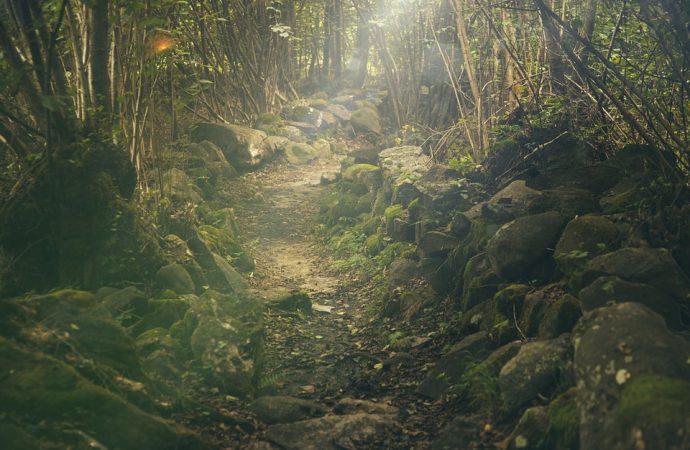Once upon a time, around 6 000 years ago, there lived a blacksmith. This blacksmith was a true craftsman, always looking for ways to improve his metal-moulding skills. When he had practised all he could, he saw only one way towards perfection: a demonic deal. So he called forth a powerful demon – some might say the devil himself – and bought the ability to weld any material. The price? His soul… Read on and find out whether he paid or not…
The evolution of stories
Evolution is one of the most powerful and well-founded scientific theories. Life evolves. One of the fundamental ideas in evolution is descent with modification. You’re not exactly like your parents or your sibling. This variation (if it’s heritable and affects fitness) provides evolution material to play with.
But it aren’t just populations of living organisms (or more precisely, gene pools) that evolve. Cultures and ideas evolve as well. That is why recently linguists and social scientists have begun to use methods originally developed by evolutionary biologists to investigate the origin and evolution of, for example, languages and artefacts.
Stories, which are a great way to study language as well as the culture that formulated them, evolve as well. A new study, published in Royal Society Open Science by scientists from the University of Lisbon in Portugal and the University of Durham in the UK, dives into the evolution of fairy tales.
Time for tales of magic
To select their stories, the authors turned to the Aarne Thompson Uter (ATU) index, a catalogue of more than 2 000 ‘international tale type’ from across 200 societies. They decided to focus on the largest and most widely shared group of stories: tales of magic, which contain the much-beloved fairy tales.
Now, stories can be transmitted both vertically, from ancestral populations to their offspring, and horizontally, between societies in the same time-period. By combining evolutionary trees and detailed maps of the cultures involved, the authors could separate these two modes of transmission. They found that 100 of their original 275 tales were much more similar than expected through chance, and that for 76 of those vertical transmission was more important than horizontal transmission.
To uncover the evolutionary history of fairy tales, these 76 would provide the key ingredients.
Ancient roots and a Bronze Age fairy tale
Using methods borrowed from evolutionary biology, the researchers could trace back the shared history of those 76 tales of magic. By tallying which tales were shared by which populations they could step back in tale time. If one of these 76 stories (vertical transmission, remember) is shared among lots of populations, then that tale probably has an ancient origin. And so, the researchers descended the evolutionary tree of tales.
This showed that many fairy tales could be quite a bit older than previously thought. Beauty and the Beast, and Rumpelstiltskin, for example, were only written down in the 17th or 18th century but, according to this study, have been part of our cultural heritage from somewhere between 6 000 and 2 500 years ago. What’s more, going all the way back through ancient language groups they even managed to identify four ‘ancestral’ stories whose origins probably lie in the Proto-Indo-European. And one of these ancient fairy tales, The Devil and the Smith, was very likely already around 6 000 years ago.
The story behind the tale
Knowing the evolutionary history of fairy tales is not just interesting in itself, but it can also teach us a lot about the culture that spawned them and help us evaluate hypotheses about history. To return to our fairy tale, the blacksmith, who sells his soul to an evil power for the ability to weld any materials together, ends up using his gift to weld the demon to a tree. To imagine a story like this, you’d have to know about metallurgy. This suggests that Proto-Indo-European languages arose around 6 000 years ago on the Russian steppes (the ‘Kurgan’ hypothesis’), and probably not 9 000 years ago in Turkey when there was no metallurgy there (the ‘Anatolian hypothesis’).
This study shows that fairy tales have probably been around for a long time, dispelling the notion that they are a fair(l)y (see what I did there?) recent phenomenon. It’s also interesting to see that some tales do well, whereas others do less. Some spread easily among cultures, others do not. And finally, evolution teaches us not just about the living world, but also about our culture and the imaginary worlds we’re so good at making.
And they live happily ever after…?
Source:
da Silva, S., & Tehrani, J. (2016). Comparative phylogenetic analyses uncover the ancient roots of Indo-European folktales Royal Society Open Science, 3 (1) DOI: 10.1098/rsos.150645






correction: Biggest Fairytale of all time is the Theory of evolution.
The biggest fairytale is topgoosz himself.